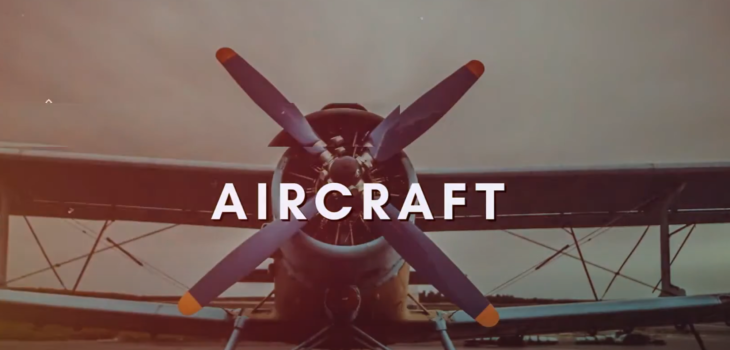 Uncategorized
Uncategorized
Climate Controlled Hangar For Collectible Air Planes
A climate-controlled hangar for historic airplanes is essential for their preservation and maintenance, as it protects these valuable aircraft from the damaging effects of environmental factors such as humidity, temperature fluctuations, and UV exposure. Extreme temperatures can lead to structural degradation, warping of materials, and corrosion, while excessive moisture can promote rust and mold growth. By maintaining a stable climate, these hangars help to ensure the longevity of the aircraft, preserving not only their physical integrity but also their historical significance.
Climate Controlling A Hangar
 Installing climate control in an airplane hangar involves several key steps to ensure optimal temperature and humidity management for the preservation of aircraft. First, it’s essential to assess the hangar’s size, construction, and insulation properties, as these factors significantly influence the effectiveness of climate control systems. Next, choose an appropriate system, which may include heating, ventilation, and air conditioning (HVAC) units, dehumidifiers, and air circulation fans to maintain a consistent climate. Proper insulation is critical; consider upgrading insulation in walls, ceilings, and doors to minimize temperature fluctuations and energy loss.
Installing climate control in an airplane hangar involves several key steps to ensure optimal temperature and humidity management for the preservation of aircraft. First, it’s essential to assess the hangar’s size, construction, and insulation properties, as these factors significantly influence the effectiveness of climate control systems. Next, choose an appropriate system, which may include heating, ventilation, and air conditioning (HVAC) units, dehumidifiers, and air circulation fans to maintain a consistent climate. Proper insulation is critical; consider upgrading insulation in walls, ceilings, and doors to minimize temperature fluctuations and energy loss.
System Install & Efficiencies
 Once the system is selected, professional installation is recommended to ensure efficiency and compliance with local building codes. The placement of HVAC units should be strategically planned for optimal airflow and even temperature distribution throughout the hangar. Additionally, installing automated controls, such as thermostats and humidity sensors, can help monitor conditions and adjust settings accordingly. There is no need to worry about compromising the aesthetics of the hangar, as hide a line set will make the climate control install discrete. Finally, regular maintenance and monitoring are vital to keep the system functioning effectively, ensuring that the climate control remains reliable for the protection of historic aircraft housed in the hangar. This proactive approach not only preserves the aircraft but also creates a comfortable working environment for maintenance personnel.
Once the system is selected, professional installation is recommended to ensure efficiency and compliance with local building codes. The placement of HVAC units should be strategically planned for optimal airflow and even temperature distribution throughout the hangar. Additionally, installing automated controls, such as thermostats and humidity sensors, can help monitor conditions and adjust settings accordingly. There is no need to worry about compromising the aesthetics of the hangar, as hide a line set will make the climate control install discrete. Finally, regular maintenance and monitoring are vital to keep the system functioning effectively, ensuring that the climate control remains reliable for the protection of historic aircraft housed in the hangar. This proactive approach not only preserves the aircraft but also creates a comfortable working environment for maintenance personnel.

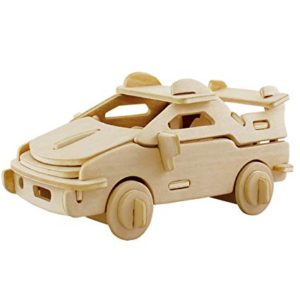 Kids love to build and create things. It is good for them to be able to do it. This is why there are so many model planes and car kits available to even preschool-aged children. You can find them in hobby stores or thrift stores all over the place. Some require an adult’s help and others are easily put together by kids. When kids start learning to create, it can open the door to many things in the future. It may even allow them to focus on restoring model planes with epoxy adhesive or building real ones in the future.
Kids love to build and create things. It is good for them to be able to do it. This is why there are so many model planes and car kits available to even preschool-aged children. You can find them in hobby stores or thrift stores all over the place. Some require an adult’s help and others are easily put together by kids. When kids start learning to create, it can open the door to many things in the future. It may even allow them to focus on restoring model planes with epoxy adhesive or building real ones in the future. The models for youngest kids are often snap together type models. They are simple to put together and ideal for even toddlers to put together with mom or dad’s help. The step up from that may be models with only a few different pieces that can be painted with watercolor paints and glued together with Elmers.
The models for youngest kids are often snap together type models. They are simple to put together and ideal for even toddlers to put together with mom or dad’s help. The step up from that may be models with only a few different pieces that can be painted with watercolor paints and glued together with Elmers.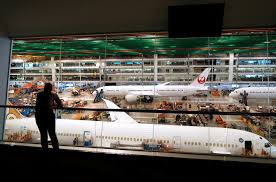 The great thing about kids building models and such is that they develop an even bigger love of creating things. In the future, it could encourage them to build new and wonderful things. They may take up woodworking and create masterpieces. They could also get a job building or restoring actual planes with similar materials to what they used in their models. They may use aluminum, titanium, or heavy steel to build airplanes rather than plastic. Instead of Elmer’s glue, they may learn how to use epoxy and
The great thing about kids building models and such is that they develop an even bigger love of creating things. In the future, it could encourage them to build new and wonderful things. They may take up woodworking and create masterpieces. They could also get a job building or restoring actual planes with similar materials to what they used in their models. They may use aluminum, titanium, or heavy steel to build airplanes rather than plastic. Instead of Elmer’s glue, they may learn how to use epoxy and 
 One of the coolest things about airplanes is their ability to travel anywhere you need to go. The sky at any given time has between 8,000 and 20,000 planes mid-flight at any given moment. It changes throughout the year and based on day or night, but that is still a lot of planes. Most of them may be commercial airlines that promise to get you there quickly. Others may be personal jets, helicopters, and others that are all on a mission of some type. In Alaska, the number of private planes is very high, because planes can go where no other mode of transportation can go.
One of the coolest things about airplanes is their ability to travel anywhere you need to go. The sky at any given time has between 8,000 and 20,000 planes mid-flight at any given moment. It changes throughout the year and based on day or night, but that is still a lot of planes. Most of them may be commercial airlines that promise to get you there quickly. Others may be personal jets, helicopters, and others that are all on a mission of some type. In Alaska, the number of private planes is very high, because planes can go where no other mode of transportation can go.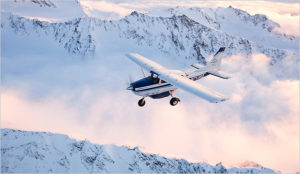 A large portion of Alaska is accessible by air or by sea. There are 400 public access airports and some offer short flights from one borough to another for a minimal fee. It is the fastest way to travel in an area that is rough and rugged. Even the capitol Juneau is not accessible by vehicles other than air or sea. In places like Barrow, you will discover that the only possible way to travel to it is air. Without airplanes, the approximately 4,500 people who call it home would be completely shut off from the rest of the world.
A large portion of Alaska is accessible by air or by sea. There are 400 public access airports and some offer short flights from one borough to another for a minimal fee. It is the fastest way to travel in an area that is rough and rugged. Even the capitol Juneau is not accessible by vehicles other than air or sea. In places like Barrow, you will discover that the only possible way to travel to it is air. Without airplanes, the approximately 4,500 people who call it home would be completely shut off from the rest of the world. In the U.S. most areas are accessible by road, but it is not always convenient. There are many people who thrive away from modern conveniences. The exception is places like Supai Village, Arizona where mail is still delivered by mule because vehicles cannot easily travel into the area. Angle Inlet, Minnesota is only accessible by boat. You have to travel into Canada and then make a southern turn to reach this little town of about 60 people. In Montana, towns like Winnett have roads and vehicles, but the nearest large city is hundreds of miles away. The closest airport is 96 miles away by land. It is in Yellowstone County. People who live
In the U.S. most areas are accessible by road, but it is not always convenient. There are many people who thrive away from modern conveniences. The exception is places like Supai Village, Arizona where mail is still delivered by mule because vehicles cannot easily travel into the area. Angle Inlet, Minnesota is only accessible by boat. You have to travel into Canada and then make a southern turn to reach this little town of about 60 people. In Montana, towns like Winnett have roads and vehicles, but the nearest large city is hundreds of miles away. The closest airport is 96 miles away by land. It is in Yellowstone County. People who live 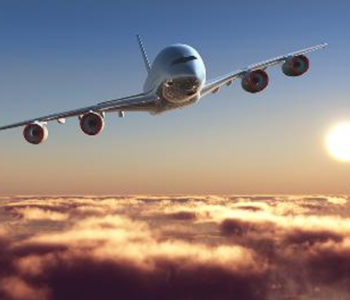
 Since the beginning of time, humans have had a fascination with flying. The desire to soar like a bird, travel faster, and other things have spurred us on to constantly evolve the idea of flying. Throughout history, virtually every era had its own unique ideas on what would make flight possible. An aircraft museum is the only place you will ever go to get a true sense of how far we have come. Are you ready to take a tour to see what you can learn about history?
Since the beginning of time, humans have had a fascination with flying. The desire to soar like a bird, travel faster, and other things have spurred us on to constantly evolve the idea of flying. Throughout history, virtually every era had its own unique ideas on what would make flight possible. An aircraft museum is the only place you will ever go to get a true sense of how far we have come. Are you ready to take a tour to see what you can learn about history? It is rumored that the first self-propelled, bird-shaped was designed and built in 400 BC in Greece, by Archytas. He was among many things, a scientist at the Pythagorean school and is most famous for being reputed as the founder of mathematical mechanics. He was also a good friend of Plato, another philosopher, among many things.
It is rumored that the first self-propelled, bird-shaped was designed and built in 400 BC in Greece, by Archytas. He was among many things, a scientist at the Pythagorean school and is most famous for being reputed as the founder of mathematical mechanics. He was also a good friend of Plato, another philosopher, among many things.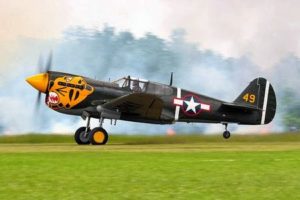 The 1900s saw technology and airplane meeting as one. By 1910, aircrafts were jet-propelled and crossing the English Channel. A few years later, during World War I, planes were crossing the ocean. By the 1960s, we had Boeing 707s.
The 1900s saw technology and airplane meeting as one. By 1910, aircrafts were jet-propelled and crossing the English Channel. A few years later, during World War I, planes were crossing the ocean. By the 1960s, we had Boeing 707s.